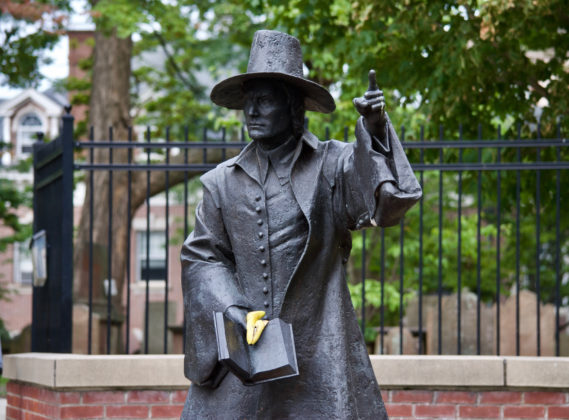
While families in Hartford are waiting to hear about where the lottery system will place their school-age children, research on the public choice system reveals what Mira Debs, a doctoral candidate at Yale, calls a “marketing disconnect.” While choice is pitched as “freedom” and about enabling the best “personal fit,” the reality for families, she says, is quite different. With the division of the city into zones, choice is limited. One Hartford mother she spoke with took issue with how she had to pick a school for her son: “I really liked [the arts school]. I actually thought [my son] had more of a performing arts bent. Not in my zone. Not in my neighborhood…So, you can have a sciency child in zone 3 or you can have an artsy child in zone 4.”
Debs is not alone in questioning how school choice is being implemented. She was joined by Robert Cotto, Jr., Jack Dougherty, and Stephen Spirou on a panel at Trinity College earlier this week.
Location does not appear to be the only limiting factor on choice, according to a report by Stephen Spirou, Diane Zannoni, Jack Dougherty, and Marissa Bloc: “Applications not random, but linked to student socioeconomic characteristics that often showed higher participation by more privileged families.”
They found that when it comes to the Regional School Choice Office, the probability of applying differs based on ones language; an English Language Learner (ELL) has a .14 probability of applying, as compared to the .22 likelihood of a non-ELL student.
Cotto, responding to a recent announcement by the Connecticut State Board of Education that charter schools outperform others, said “of course” they do. Charters have a much smaller number of bilingual students.
Students requiring special education services were found significantly less likely to apply with the RSCO, while those whose household median income is more than $40,000 and/or who live in owner-occupied housing were significantly more likely to participate in the choice system. In this study funded by Achieve Hartford, Spirou et al. looked at what differences in rates of application could be found based on gender, race, eligibility for free/reduced school lunch, grade level, magnet school attendance, home and school locations, distance between home and school, potential applicant’s test scores, and school performance index.
The impact of private transportation on choice could not be overstated. Debs said that 34% of Hartford families do not own cars and very few magnet schools provide free transportation to preschool students. While it is easier to secure a seat when entering the school during preschool, there are many who do not get that chance because of the distance and transportation factors.
The potential move of Moylan Montessori from Hartford to the middle of West Hartford has drawn more attention to this issue.
Who chooses is complicated by the recruitment process, Debs suggested. Through observations at magnet school fairs, she noticed that 81% of the recruiters were white. A black recruiter Debs spoke with said, “Of course they’re all white. They’re supposed to be recruiting white families, and they have a better chance of convincing them to come that way.”
There is also the question of how certain magnet school themes might attract certain types of applicants.
Dougherty said that one’s zip code largely determines destiny and that there has been work to “decouple” that, but there is no consensus on how this should happen.

Zaida Berrios
A brother & a sister, same home. Older goes to Capital Prep. Accepted before staff preference. Neighborhood preference. Now sister is on waiting list. 1 yr.# 4 . Next yr.#14. She was chosen to go to Clark School, not in her zone, unless zone was changed to suit RSCO. We fought this. We had to settle for Achievement 1st. 2 kids, 2 schools, 2 different schedules, & 2 different vacations. This is an added stress on our family. Against whole point. Capital Prep is down the street & is integrated. Achievement 1st is farther & segregated. Staff preference at Capital Prep & no sibling preference. Something fishy here. Is anyone looking into this?